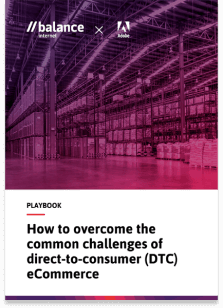Growing appetite for eCommerce beyond traditional retail
Latest news / 25 April 2022


Explore the appetite for eCommerce beyond traditional retail.
As we slowly emerge from the pandemic, companies across the board are looking at new ways to drive growth. The significant spike in online spending over the past two years has been a boom for eCommerce, with Australia Post’s 2021 eCommerce industry report citing 57% YOY growth of online purchases.
The growth of eCommerce has been so remarkable that now, organisations outside of traditional retail are looking at how they can get in on the eCommerce boom. From government agencies and higher education to private businesses and healthcare providers, eCommerce is on the brink of radical transformation as it moves beyond traditional ‘online retail’ to include B2B eCommerce, Direct-to-Consumer sales and the growth of digital marketplaces as organisations look to new and innovative ways to commercialise their IP.
The business of education
Amongst tourism and bricks and mortar retail, higher education was one of the hardest-hit industries during the pandemic. In February 2021, Universities Australia announced that universities had lost $1.8 billion in revenue for 2020 and 17,000 jobs, due to the drop in international student numbers and a $1.1 billion drop in investment income.
Similar to the spike in online shopping, new ABS data shows that 42% of Australians participated in online learning during the 2020-21 financial year, with the rate of online work-related training having more than doubled from 19% to 55%, when compared with 2016-17 data. Savvy universities are making the most of this shift to online learning, implementing eCommerce style solutions as a way of boosting revenue. In addition to commercialising education with eLearning solutions – from full degrees to short courses and micro skills – universities such as Monash, who have an established eCommerce Marketplace solution, are well positioned to innovate and extend their existing solutions to meet new market demand more readily and all from the one platform. By adopting eCommerce best practices, universities are able to increase revenue and fast-track their economic recovery.
Transforming healthcare sales
The healthcare and life sciences industry is also experiencing a significant digital shift, as it looks to eCommerce best practices to create new business opportunities. Direct-to-Consumer sales are fast becoming a popular channel for many healthcare brands that’ve previously only sold via retail and distribution partner networks, particularly for products such as over-the-counter and non-prescription drugs, vitamins and supplements, health food, eyeglasses and contact lenses, wound care and personal care, and at-home dental care and orthodontics.
Equally, digital frameworks are being implemented to support growth for B2B medical device and pharmaceutical companies with B2B eCommerce solutions and self-service options for the long-tail of small business customers. Even traditionally face-to-face healthcare providers are exploring how they can add eCommerce channels to support their business, from aged care facilities selling event tickets to residents and families to health providers like physios and chiropractors selling therapeutic products while simultaneously managing client bookings.
A shopping cart experience for government
With many Australians now interacting with government services online, streamlining the user experience by making government websites more user-friendly can help ensure citizens more easily find the information and services they need. By utilising established eCommerce patterns from the retail sector, governments are transforming their websites to be more searchable and browsable, creating more ‘shoppable’ public services and information.
Forward thinking departments are already overhauling outdated websites to better replicate the eCommerce experience. Whether it’s actually selling items – such as a Victorian not-for-profit healthcare organisation which turned to selling medicines and other products online as a way of alleviating call centre pressure – or mimicking the retail marketplace for initiatives such as Skill Finder which makes free short courses easier to find, government agencies across the board are turning to eCommerce-style solutions as a way of improving the citizen experience.
When you can’t build it, buy it
While many organisations are exploring how to create bespoke eCommerce strategies to drive growth, other companies are doing this through acquisitions. Recently, one of Australia’s major publishing houses, Are Media, purchased Australian eCommerce business, Hard to Find; an acquisition which will allow Are Media to integrate sales with content, much in the same way we already see on popular social media platforms like Instagram, YouTube and TikTok. As eCommerce continues to grow, we’re likely to see more companies exploring the possibility of acquiring established eCommerce businesses whose audiences align with their own.
For years, retailers have been perfecting the eCommerce experience, with the pandemic further accelerating the shift to online shopping and driving the hyper-convenience economy. Now, other industries are looking at the success of eCommerce and wanting a piece of the action. Over the coming years, we’ll see eCommerce move beyond traditional retail, with governments, education providers and private businesses exploring how they can improve their customer experience and grow their brands with eCommerce. Because wherever there’s a website, there’s an opportunity to generate revenue – and businesses will only be limited by their imagination.
–
This article was originally published on retailbiz, on 29th March 2022.



